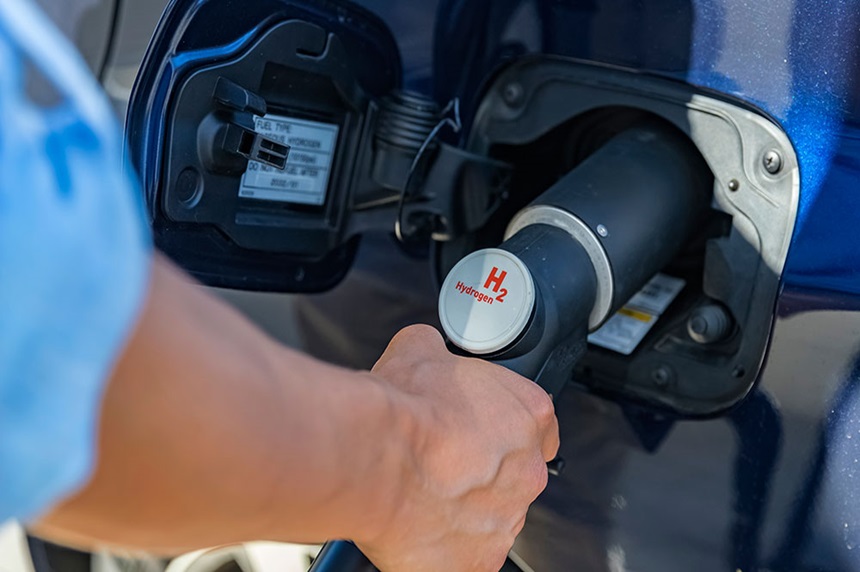21
May
What are the different types of hydrogen vehicles?
Hydrogen vehicles are gaining popularity as a more sustainable and environmentally friendly transportation option. With concerns about climate change and the need to reduce greenhouse gas emissions, hydrogen vehicles offer a promising solution. These vehicles use hydrogen as a fuel source produced from renewable sources and emit only water vapor when used.
One of the key advantages of hydrogen vehicles is their zero-emission nature. Unlike gasoline-powered vehicles that emit harmful pollutants such as nitrogen oxides and carbon dioxide, hydrogen vehicles emit water vapor. It makes them a clean and environmentally friendly option, helping to reduce air pollution and combat climate change.
In addition, refueling a hydrogen vehicle is faster when compared to charging a battery electric vehicle (BEV). It takes only a few minutes to refuel a hydrogen vehicle, similar to the time it takes to refuel a gasoline-powered vehicle. It eliminates the range anxiety associated with BEVs and provides a more convenient option for long-distance travel.
Types of Hydrogen Vehicles - Fuel Cell Electric Vehicles (FCEVs)
Fuel Cell Electric Vehicles (FCEVs) are one of the main types of hydrogen vehicles available today. These vehicles use a fuel cell to produce electricity by combining hydrogen and oxygen.
One of the significant advantages of FCEVs is their longer driving ranges compared to BEVs. FCEVs can travel several hundred miles on a single tank of hydrogen, making them more suitable for long-distance travel. In addition, refueling an FCEV is similar to refueling a gasoline-powered vehicle, which provides a quicker and more convenient option when compared to charging a BEV.
However, FCEVs also have some disadvantages. One of the main challenging factors is the lack of infrastructure for hydrogen refueling. While the number of hydrogen refueling stations is increasing, they are still limited in availability compared to gasoline stations or electric charging stations.
Another drawback is the high cost of fuel cell technology. Fuel cells are still relatively expensive, contributing to the higher cost of FCEVs compared to traditional gasoline-powered vehicles or even BEVs.
Types of Hydrogen Vehicles - Hydrogen Internal Combustion Engine Vehicles (HICEVs)
Hydrogen Internal Combustion Engine Vehicles (HICEVs) are another type of hydrogen vehicle that utilizes hydrogen as a fuel source for an internal combustion engine, like traditional gasoline-powered vehicles.
One of the advantages of HICEVs is their ability to use existing infrastructure. Unlike FCEVs, which require dedicated hydrogen refueling stations, HICEVs can be refueled at traditional gasoline stations. It makes them a more convenient option for consumers as they can easily find a refueling station.
In addition, HICEVs produce significantly fewer emissions compared to conventional gasoline-powered vehicles. While they still emit greenhouse gases, the emissions from a HICEV are lower due to the combustion of hydrogen, which results in water vapor as the main byproduct. It makes HICEVs a cleaner alternative to traditional gasoline-powered vehicles, helping to reduce air pollution and mitigate climate change.
However, there are some disadvantages to consider. One drawback is the lower energy efficiency of HICEVs compared to FCEVs or BEVs. Converting hydrogen into mechanical energy in an internal combustion engine is less efficient than using a fuel cell or electric motor. HICEVs may have lower fuel economy and require more hydrogen to achieve the same driving range.
Other Types of Hydrogen Vehicles - Hybrids and Plug-in Hybrids
In addition to fuel cell electric vehicles (FCEVs) and hydrogen internal combustion engine vehicles (HICEVs), other types of hydrogen vehicles combine hydrogen fuel cells with either a battery or an internal combustion engine. These vehicles are known as hydrogen hybrids or hydrogen plug-in hybrids.
One of the main advantages of hydrogen hybrids is their flexibility. These vehicles can operate in all-electric mode, using only the battery and electric motor, or in hybrid mode, utilizing both the fuel cell and the battery or internal combustion engine. This flexibility allows for optimal efficiency and range, depending on driving conditions and user preferences.
Furthermore, hydrogen hybrids offer the advantage of faster refueling times compared to battery electric vehicles (BEVs). While BEVs require hours to charge, hydrogen hybrids can be refueled in a few minutes, like gasoline-powered vehicles. This makes them a more convenient option for those who need quick refueling or are concerned about range anxiety.
Conclusion
In conclusion, hydrogen vehicles offer a promising solution for a cleaner and greener future of transportation. There are different types of hydrogen vehicles, each with their advantages and disadvantages. Fuel cell electric vehicles (FCEVs) utilize fuel cells to produce electricity, offering longer driving ranges and faster refueling times compared to battery electric vehicles (BEVs). Hydrogen internal combustion engine vehicles (HICEVs) use hydrogen as a fuel source for an internal combustion engine, emitting significantly fewer emissions when compared to traditional gasoline-powered cars.
While hydrogen vehicles face challenges, such as the availability of hydrogen refueling infrastructure and the cost of the technology, they offer several benefits, including zero emissions, longer driving ranges, and faster refueling times. As technology advances and the infrastructure expands, hydrogen vehicles can play a significant role in reducing greenhouse gas emissions and creating a more sustainable transportation system.


Comments